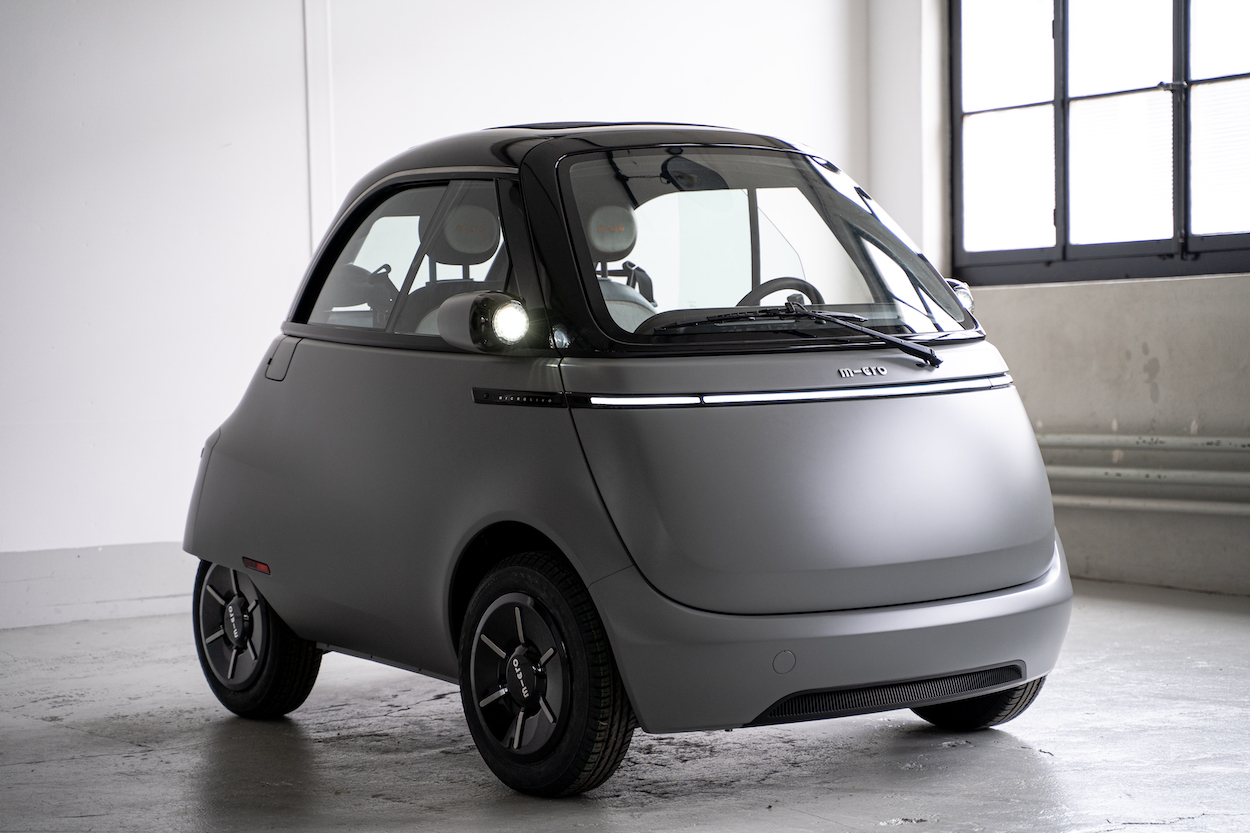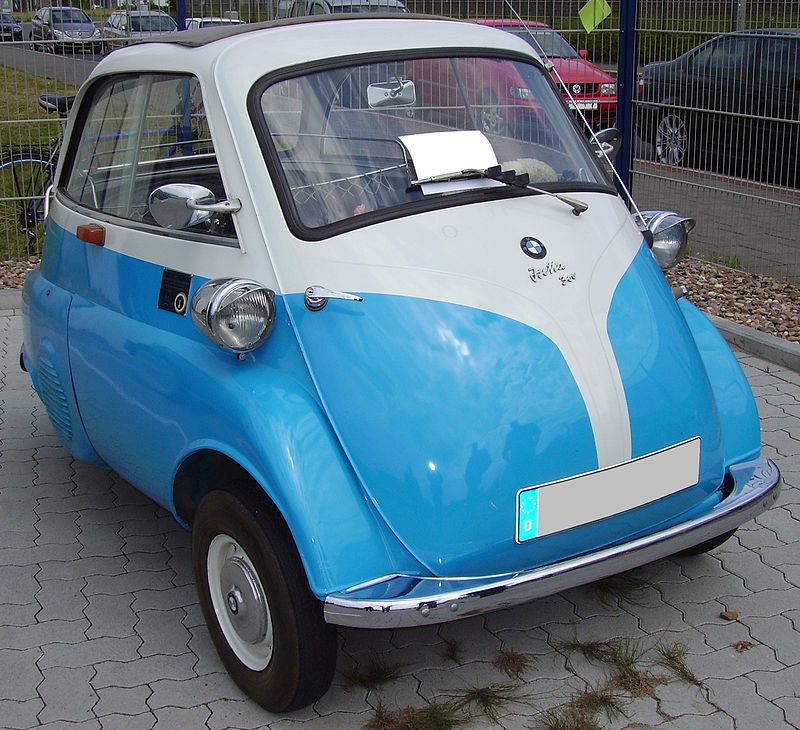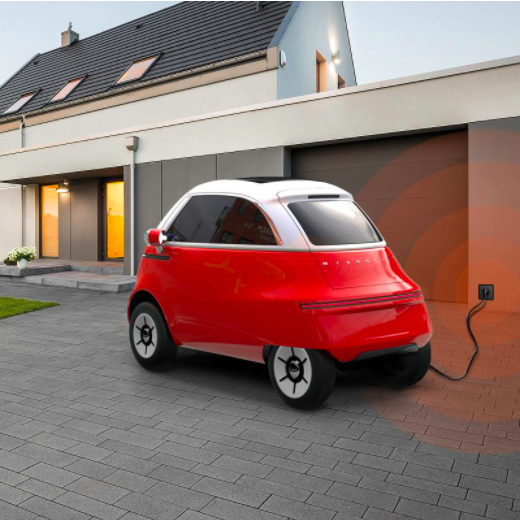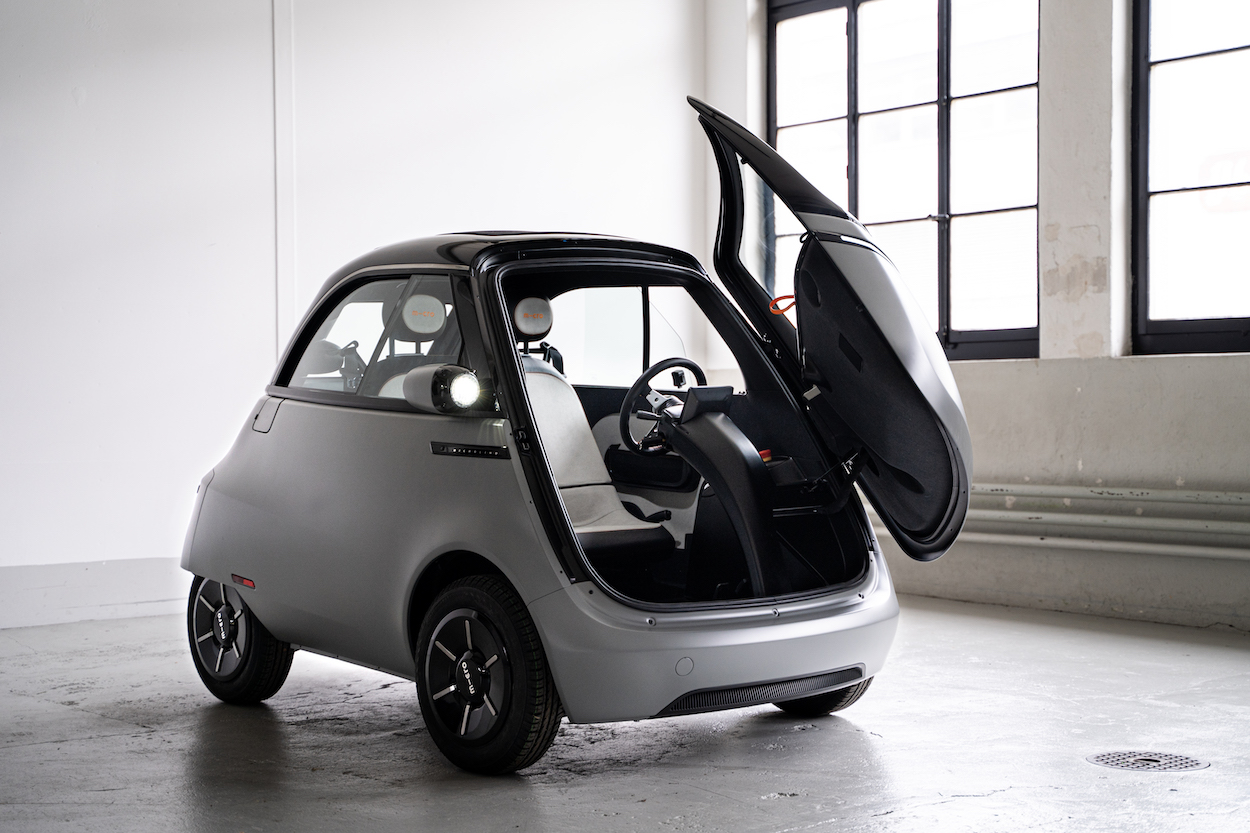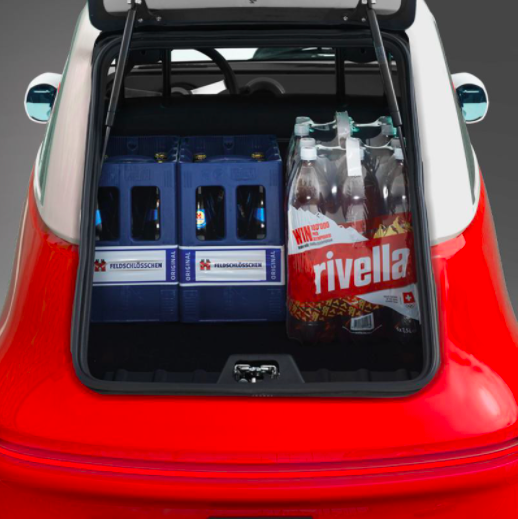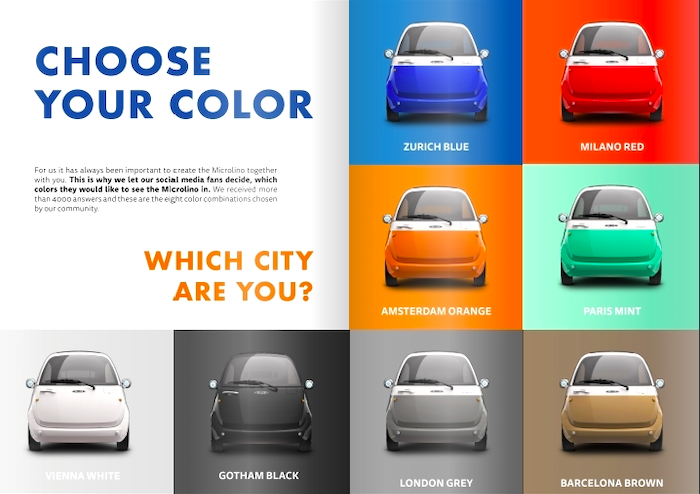Small and compact, it’s designed for the urbanites who might want a mini city-vehicle without the hustle of finding (or paying for) a large parking space. Technically, the Microlino is a quadricycle, but we can definitely call it a retro electric bubble car, mainly due to its resemblance with the 1950s Isetta. Unlike the Isetta, the Microlino 2.0 is powered by electricity. It will come in three models with different battery size and capability: Urban (6kWh battery), Dolce (10.5kWh), and Competizione (14kWh). These three versions will serve projected ranges of 95km, 175km, and 230km, respectively. This is impressive for a microcar. For reference, the normal-sized Renault Zoe ZE40 R110 has a 255km range on a single charge. Despite its tiny size, it has a 25hp motor and a top speed of 90km/h, which is more than one would need for urban driving. Interestingly, this EV doesn’t have any side doors, but instead has a large front door from which the users can enter. It’s interior is rather minimalistic, but does have a digital instrument panel, and a surprising 220L trunk volume. And to add to its cuteness, the Microlino will come in eight cool colors, named after European cities.
When can we have it?
Initially, the Mircrolino was expected reach customers at the end of 2021. The company announced as much in September, when it was setting up its production facility in Turin. But the pandemic-induced supply chain shortages heavily impacted the Microlino too. As a result, the start of production needs to be postponed until all the necessary car parts are available. According to the company, production is slated to begin in mid-March 2022. The first vehicles will be delivered to Swiss customers in April and May. Germany will follow soon after. Nevertheless, the company promises to make up for the delay with a faster ramp-up. And I do hope that this spring we’ll be able to see the Microlino on the streets.
Could the Microlino dominate European streets?
That’s the big question. Microcars are an increasingly popular choice in China and Japan, but could they become the next big thing in Europe as well? My guess is it’s indeed very possible. People are getting more environmentally conscious, micromobility services are booming, and there’s an increasing demand for reducing traffic congestion in urban centers. Add these to the relatively low $14,500 price tag, and the odds are high. Up until now, at least 24,000 buyers have already placed reservations for a Microlino, and perhaps that’s an indication of a new trend.
